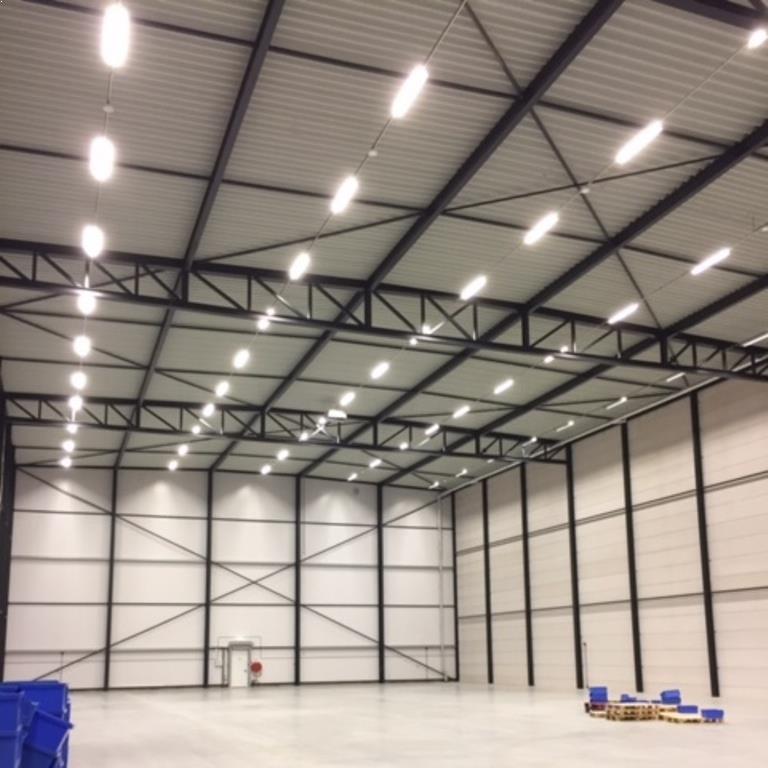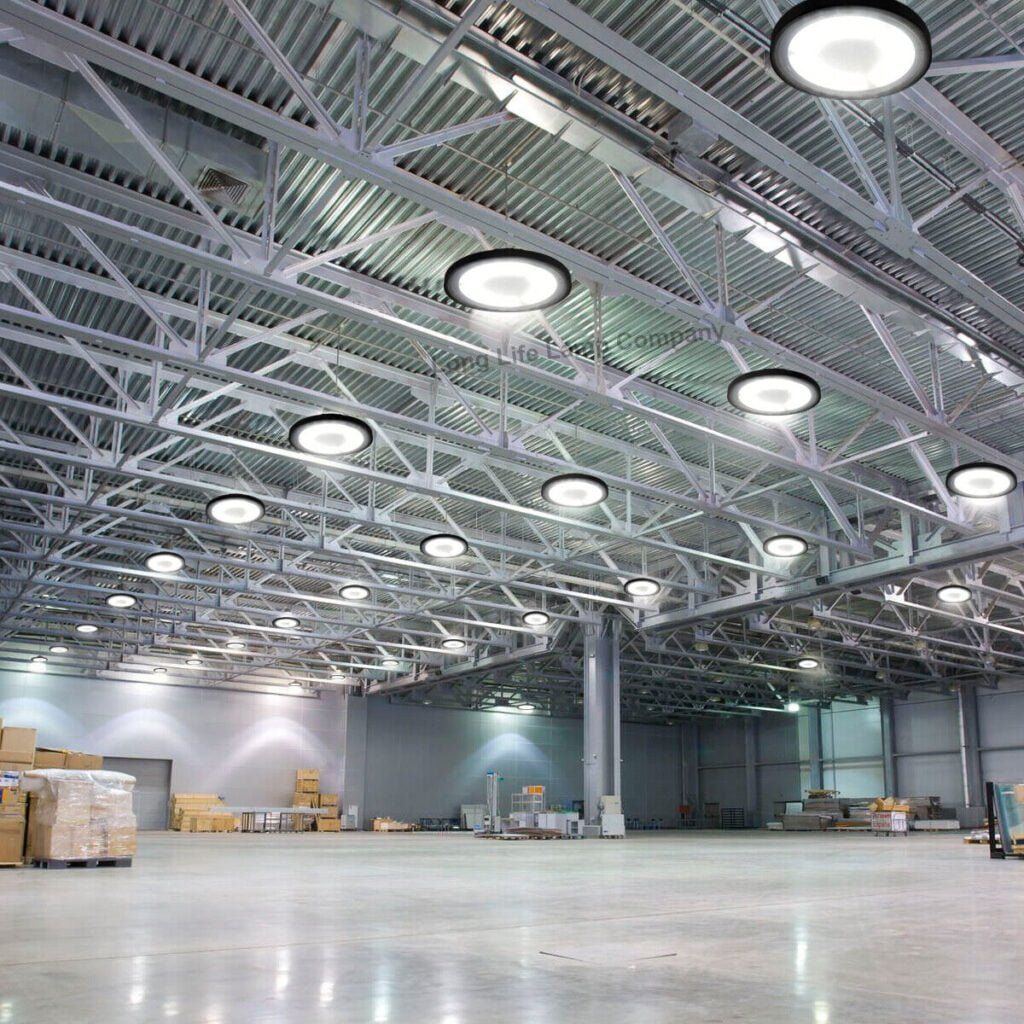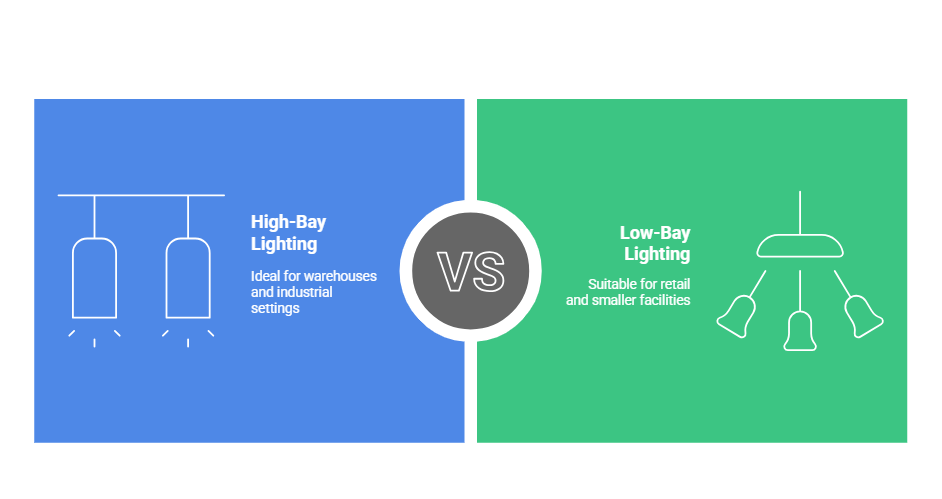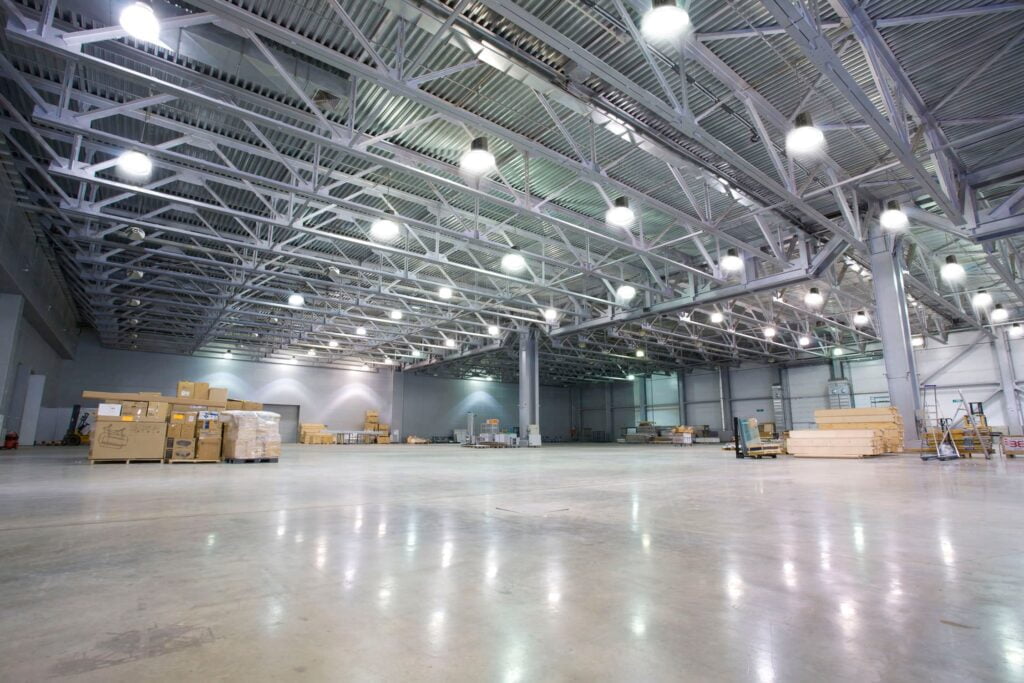Comparing High Bay and Low Bay Lighting Systems
Table of Contents
Commercial lighting represents an emerging market worth more than $8.2 billion.
Facilities such as large office buildings, industrial plants, warehouses, and high-ceiling structures require custom lighting configurations to ensure adequate brightness.
This often leads to a common question: what is the difference between Gaowan lamps and lanterns?

With many options, LED lights have now emerged as the favored substitute for traditional fluorescent bulbs. High and low bay lighting fixtures are the most practical choices for expansive spaces graced with relatively towering ceilings.
Although these two lighting types share several characteristics, like their installation on high ceilings, it’s crucial to note that they also exhibit distinct differences making them adept for varying circumstances.
Delve into our high bay versus low bay lighting comparative guide to comprehend the functionalities of these fixtures and gain insights on discerning the most fitting option for your needs.
Understanding High-bay Lighting
High-bay lighting refers to fixtures designed to illuminate large spaces. Typically, these light fixtures are used indoors, for instance, in warehouses or factories. These heavy-duty lighting solutions offer uniform light distribution throughout the room.
High-bay lights are notable for their extensive light coverage, aiding in the clear visibility of objects at a significant distance. Their high-lumen output enhances this visibility factor. These light fixtures are installed at considerable heights to maintain brightness in a specific area.
Exploring Low-bay Lighting
Low-bay lights are employed at about 20 feet off the ground. The brightness and intensity of these light sources are unique, usually under 100 watts. However, the luminosity of these fixtures can vary depending on the use case.
Unlike high-bay lights, low-bay fixtures are hung using hooks or chains rather than being directly fixed into canopies. While they distribute or reflect light, they don’t offer maximum brightness, so the visibility of distant objects may not be as clear.
Creating Industrial Bay Lights
The construction process for each type of bay light varies significantly. A low bay lighting device incorporates lenses or reflectors to expand illumination and decrease glare. In contrast, a high bay light device requires unique reflectors, either fabricated from aluminum to direct the light downwards to the floor or made of colorful elements to scatter the light, illuminating elevated objects and shelves.
High bay lights offer a broader array of variants. They can be incorporated into light fixtures, including LED, induction, metal halide, or fluorescent. These lights can be categorized into round, linear, architectural, and grid-mount types.
High bay lights offer extensive application possibilities in industrial and manufacturing establishments, warehouses, gymnasiums, community or recreation centers, airport hangars, and commercial buildings such as department stores.
Key Features & Attributes
High-bay
- High-bay lighting is a low-maintenance solution, meaning the lights have a long lifespan and don’t require frequent replacement or significant upkeep costs.
- These lights are perfect for meeting high-intensity lighting demands and illuminating large areas.
- A few high-bay lights can sufficiently light a large space, reducing the need for multiple fixtures.
- High-bay lights significantly enhance visibility and focus in a room, eliminating issues related to poor lighting.
- Despite consuming more electricity, the amount of light they generate makes them a worthwhile investment.
Low-bay
- Low-bay lights are suitable for smaller spaces, which in turn, reduces the overall product cost.
- These fixtures are a common sight in households and smaller warehouses.
- The use of low-bay lights doesn’t significantly affect electricity bills.
Applications
High-bay
1. Airports
Airports require high bay lighting fixtures for optimal visibility, as important information outlets are often positioned at great heights. While some airlines might prefer natural light to save on costs, high-bay lights are essential to ensure round-the-clock visibility, particularly during night operations.
2. Factories
Factories or power plants, with their towering machinery, often have ceilings that exceed 20 feet. Natural light is inadequate for such heights, making high-bay lights a necessity. These fixtures significantly enhance visibility within these vast spaces.
3. Outdoor Areas
High-bay lights can be deployed in various outdoor locations, like local park walkways. In these settings, high-bay lights illuminate large areas from significant heights.

Low-bay
1. Compact Lighting for Small-scale Storage Facilities
Every retailer, from department stores to boutique shops, typically manages a compact warehouse or godown for inventory storage. These small-scale storage facilities require low bay lighting, which is ideal for smaller spaces.
2. Lighting for Spice Preparation Areas
Both restaurants and home kitchens require a reserve of raw ingredients for meal preparation. A more subdued level of illumination is preferred in these spice preparation areas, which often don’t have high ceilings and don’t require excessive lighting.
High-bay Lighting
Pros
1. Robustness
High-bay lighting fixtures are notably robust, keeping maintenance costs low. Plus, they’re damage-resistant and guarantee an extended operational lifespan.
2. Energy Efficiency
High-bay lights have become popular with the current trend toward technologically advanced lighting options for improved energy management. They replace conventional lighting fixtures, providing ample illumination while keeping energy usage in check.
These fixtures minimize energy costs substantially. With smart sensors in intelligent lighting systems, this cost can be reduced even further.
3. Consistent Lighting
Regardless of how frequently the high-bay lights are switched on or off, they won’t overheat. There’s no impact on the consistency of light spread as well.
4. Clear Visibility
High-bay lights ensure clear visibility even from a distance, thanks to their uniform light distribution. The even dispersal of light beams plays a significant role in achieving this clarity.
5. Extended Lifespan
Compared to fluorescent bulbs or other lighting options, high-bay lighting fixtures have an extended lifespan – about ten times longer. Emitting less heat, contributes to decreased cooling costs for the fixture.
Cons
1. Elevated Installation Costs
Installing high-bay lights can be more expensive than the total installation cost of other lighting fixtures. Specifically, the cost could be two to three times higher than different lighting systems.
2. Increased Repair Costs
Low-quality lighting fixtures can lose their luminosity quickly. However, the cost to restore their brightness could exceed the price of purchasing new units. Therefore, it’s recommended to replace rather than repair them.
3. Tendency to Dim Early
The quality of high-bay lights determines their longevity. Inferior-quality fixtures may lose their illuminating effect quite soon. Hence, it’s crucial to scrutinize the manufacturer and other details of the high-bay lighting fixtures before buying.
Low-Bay Lighting
Pros
1. Superior Lighting Quality
The quality of light provided by bay lighting can be gauged using various measures, such as lumen output, color rendering, and color temperature. With low-bay lighting fixtures, however, these qualities are often enhanced, offering a more versatile lighting solution.
2. Extended Lifespan and Cost Efficiency
Low-bay lights are known for their long-lasting lifespan and cost-effectiveness. Besides being economical, they do not suffer from rapid dimming, which adds to their overall value.
3. Excellent Performance
The performance of low-bay lighting fixtures is well-regarded among consumers. These lights consume less power while producing more lumens, providing an efficient lighting solution at a reasonable cost.
4. Minimal Heat Emission
Operating low-bay lights does not result in a significant amount of heat, ensuring they don’t contribute to an unwanted increase in room temperature.
Cons
1. Limited Lumen Output
Due to the short distance between the ceiling and the floor, low-bay lights offer lower lumen output. Consequently, the brightness and overall visibility may be compromised, making these lights less suitable for larger spaces.
2. Reduced Area Coverage
Low-bay fixtures can only effectively light spaces with up to 20 feet of ceilings, meaning they don’t cover wide areas well. Their low lumen output contributes significantly to this limitation, making them less suitable for outdoor or expansive spaces.
3. Narrow Lens Angles
The lens angles of low-bay lights are restricted due to their stature difference from high-bay lights. The height difference also affects the positioning and illumination of the lights. As a result, their reflectors can’t cover large areas and provide widespread visibility.
4. Lower Wattage
Low-bay lights typically operate at less than 100 watts, indicating lower power consumption capacity. However, this lower power capacity may damage certain components of the product.
Comparing High-Bay and Low-Bay Lighting: Essential Distinctions

Several key attributes distinguish high-bay and low-bay lighting. These characteristics include:
Mounting Elevation
High-bay lights are designed to illuminate spaces with ceilings ranging from 20 to 40 feet or even higher. Conversely, low-bay lights are ideal for spaces with a height of 12 to 20 feet from the floor.
Beam Spread
High-bay lighting systems utilize beam angles: 60°, 90°, and 120°. In contrast, low-bay lights typically feature a single beam angle of 120°. High-bay lighting often results in a high lux level due to transforming a narrow beam into a more concentrated one. In low-bay lighting, the beams disperse to a specific area. The various beam angles of low-bay lighting optimize the illumination of a given space.
Usage
High-bay lights are commonly seen in large spaces like warehouses, storage facilities, gymnasiums in schools and universities, and airport hangars. Low-bay lights, however, are often used in areas such as frozen storage facilities, retail stores, gas stations, restaurants, and more.
Luminosity
Low-bay lights typically have a lower lumen output as they are designed to provide less intense light. By definition, low-bay lights are not meant to emit many lumens. However, high-bay lights must deliver more light to cover larger areas, leading to a higher lumen output.
Installation Method
High-bay lighting fixtures are typically hung as pendants using hooks specifically affixed to the ceilings. This allows the light to descend vertically to the floor. This feature is not as prevalent in low-bay light installations.
Selecting the Appropriate Bay Lighting: A Guide
While planning the lighting for your location, you should consider specific factors to ascertain whether high-bay or low-bay lights would be the best fit.
The Interplay of Beam Width and Length
The initial consideration should be ensuring the light fixtures’ height aligns with one of the prescribed beam angles. High bay lighting fixtures are suitable with beam angles of 60°, 90°, or 120°. However, a focused beam angle of 120° is recommended for low bay lighting.
Once the beam angle is determined, the beam width can be easily obtained.
This involves the calculation of the distance between the beam angle x 0.018 x and the light bulb.
Mounting Options
Before finalizing your lighting setup, mounting variations, including slip filters and straight arms, should be considered. Concurrently, the distribution pattern of the light source must also be chosen. Of the various types, Type III is particularly effective for parking lots and roads, whereas Type V excels in illuminating a broad expanse.
Retrofit Considerations
LED lighting is typically used in conjunction with retrofit kits. These kits, complete with trunnions, slip fitter brackets, and other necessary components with an arm, can be a cost-effective solution.
Color Temperature Selection
Choosing the right color temperature for each area is crucial for optimal object visibility. Warmer hues tend to create a comforting ambiance, while blue tones are used to enhance visibility.
Design Considerations
The design or form of the lighting fixture merits careful thought as it determines its lighting delivery. Round lights are typically used for illuminating expansive areas, while rectangular lights are the go-to choice for long workbenches.

Deciding On The Superior Choice: LED Vs Fluorescent Bulbs
Initially, the user should decide what kind of lighting is preferable. There has been a longstanding debate between LED and fluorescent bulbs. However, with recent technological advancements, LED bulbs have gained dominance over fluorescent bulbs.
Modernizing LEDs has significantly increased their market share, leading to widespread acceptance. It’s important to note that LED bulbs offer up to 25 times more lifespan and consume about 75% less energy than typical fluorescent lamps.
Considering Power Capacity
Sometimes, a bulb’s power capacity is inadequate for illuminating a particular space. To achieve optimal brightness, it is vital to have a power capacity of around 130 lumens per watt.
Choosing Between High and Low Bay Lighting
The selection of the right bay light depends on the accurate ceiling height measurement. Once the height is measured correctly, the suitable bay light can be determined. High bay lighting should be considered to illuminate a large or wide area.
However, before making any decisions, measuring the distance from the ceiling to the floor is crucial. High bay lighting should be considered for distances ranging from 20 to 40 feet, whereas low bay lighting is suitable for heights 12 to 20 feet from the floor.
Final Thoughts
Bay lights offer a broad-spectrum illumination solution, adaptable to indoor and outdoor settings. The key factor to consider before choosing a suitable bay light is the distance between the ceiling and the floor. With this measurement, the appropriate bay light selection becomes straightforward and hassle-free.
This comprehensive guide delves into the nuances of high and low bay lights. Moreover, it clarifies commonly raised queries, intending to give users a well-rounded understanding of the topic.
MyLikeLed is a renowned manufacturer of top-tier LED strips and LED neon flex. Our products undergo rigorous testing in state-of-the-art laboratories to guarantee unparalleled quality. We also provide customization options for our LED strips and neon flex. Therefore, for superior LED strip and LED neon flex solutions, reach out to MyLikeLed at your earliest convenience!
FAQs
High bay lighting is commonly used in warehouses, factories, gymnasiums, and large retail stores, where the ceilings are tall and a wide, powerful light distribution is needed.
Low bay lighting is perfect for smaller commercial spaces, such as garages, workshops, and small warehouses, where the ceiling height is relatively low and light needs to be more focused.
High bay lights are generally brighter and have a higher lumen output to ensure even lighting from a greater height. Low bay lights use fewer lumens as they are closer to the ground.
No, using high bay lights in low-ceiling areas can cause glare and uneven lighting. It’s important to choose the right type based on ceiling height to achieve the best lighting results.
Yes, both LED high bay and low bay lights are highly energy-efficient, long-lasting, and cost-effective compared to traditional lighting systems like metal halide or fluorescent.
Start by measuring your ceiling height. If it’s above 20 feet, go with high bay lights. If it’s between 12–20 feet, choose low bay lights. Also consider the size of your space, brightness needs, and energy efficiency goals.

Hi, I’m Xylia Xiong, a sales professional with 14 years of experience in the LED strip light industry. I specialize in providing tailored solutions, leveraging my expertise in LED products and the latest industry trends. Known for effective communication and problem-solving, I’m dedicated to helping lighting manufacturers, importers, and distributors achieve their goals.
Let’s work together to create customized solutions that exceed expectations.
Related Posts

The Best LED Strip Lights You Can Buy Right Now

Comparing WS2811 Vs WS2812B: Key Differences


